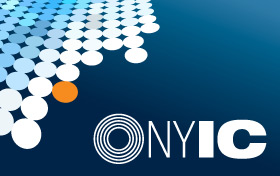Authors: Ben Hyman, Benjamin Lahey, Karen X. Ni, and Laura Pilossoph
-
- About the New York Fed
- What We Do
- Communities We Serve
-
More About Us
-
At the New York Fed, our mission is to make the U.S. economy stronger and the financial system more stable for all segments of society. We do this by executing monetary policy, providing financial services, supervising banks and conducting research and providing expertise on issues that impact the nation and communities we serve.

The New York Innovation Center bridges the worlds of finance, technology, and innovation and generates insights into high-value central bank-related opportunities.

Do you have a request for information and records? Learn how to submit it.

Learn about the history of the New York Fed and central banking in the United States through articles, speeches, photos and video.
-
- Markets & Policy Implementation
-
- Reference Rates
- Effective Federal Funds Rate
- Overnight Bank Funding Rate
- Secured Overnight Financing Rate
- SOFR Averages & Index
- Broad General Collateral Rate
- Tri-Party General Collateral Rate
- Desk Operations
- Treasury Securities
- Agency Mortgage-Backed Securities
- Repos
- Reverse Repos
- Securities Lending
- Central Bank Liquidity Swaps
- System Open Market Account Holdings
- Primary Dealer Statistics
- Historical Transaction Data
-
- Monetary Policy Implementation
- Treasury Securities
- Agency Mortgage-Backed Securities
- Agency Commercial Mortgage-Backed Securities
- Agency Debt Securities
- Repos & Reverse Repos
- Securities Lending
- Discount Window
- Treasury Debt Auctions & Buybacks
as Fiscal Agent - INTERNATIONAL MARKET OPERATIONS
- Foreign Exchange
- Foreign Reserves Management
- Central Bank Swap Arrangements
- ACROSS MARKETS
-
- Economic Research
- U.S. Economy
- Consumer Expectations & Behavior
- Growth & Inflation
- Economic Heterogeneity Indicators (EHIs)
- Multivariate Core Trend Inflation
- New York Fed DSGE Model
- New York Fed Staff Nowcast
- R-star: Natural Rate of Interest
- Labor Market
- Financial Stability
- Corporate Bond Market Distress Index
- Losses from Natural Disasters
- Outlook-at-Risk
- Treasury Term Premia
- Yield Curve as a Leading Indicator
- Banking
- RESEARCHERS
-
- Financial Institution Supervision
- Bank Applications
-
As part of our core mission, we supervise and regulate financial institutions in the Second District. Our primary objective is to maintain a safe and competitive U.S. and global banking system.

The Governance & Culture Reform hub is designed to foster discussion about corporate governance and the reform of culture and behavior in the financial services industry.

Need to file a report with the New York Fed? Here are all of the forms, instructions and other information related to regulatory and statistical reporting in one spot.

The New York Fed works to protect consumers as well as provides information and resources on how to avoid and report specific scams.
-
- Financial Services & Infrastructure
-
The Federal Reserve Bank of New York works to promote sound and well-functioning financial systems and markets through its provision of industry and payment services, advancement of infrastructure reform in key markets and training and educational support to international institutions.

The New York Innovation Center bridges the worlds of finance, technology, and innovation and generates insights into high-value central bank-related opportunities.

The growing role of nonbank financial institutions, or NBFIs, in U.S. financial markets is a transformational trend with implications for monetary policy and financial stability.

The New York Fed offers the Central Banking Seminar and several specialized courses for central bankers and financial supervisors.
-
- Community Development & Education
-
- Staff
-
Fed System Initiatives
- Other Community Development Work
- Calendar
-
August 2025
JEL classification: J08, M53, O31
We document the extent to which workers in AI-exposed occupations can successfully retrain for AI-intensive work. We assemble a new workforce development dataset spanning over 1.6 million job training participation spells from all U.S. Workforce Investment and Opportunity Act programs from 2012-2023 linked with occupational measures of AI exposure. Using earnings records observed before and after training, we compare high AI exposure trainees to a matched sample of similar workers who only received job search assistance. We find that the average earnings return to training among AI-exposed workers is high, around $1,470 per quarter. Low-exposure trainees capture higher returns, and trainees who target AI-intensive work face a 29 percent earnings return penalty relative to their high exposure peers who pursue more general training. We estimate that between 25 to 40 percent of occupations are “AI retrainable” as measured by its workers receiving higher pay for moving to more AI-intensive occupations—a large magnitude given the relatively low-income sample of displaced workers. Positive earnings returns in all groups are driven by the most recent years when labor markets were tightest, suggesting training programs may have stronger signal value when firms reach deeper into the skill market.
Ben Hyman has not received any source of research support nor has he any financial relationships or potential conflict of interests to report in conducting this research. The views expressed here are the authors’ and are not necessarily the views of the Federal Reserve Bank of New York or the Federal Reserve System. The Federal Reserve Bank of New York reviewed the contents of this disclosure prior to submission.
Ben Lahey
Ben Lahey has not received any source of research support nor has he any financial relationships or potential conflict of interests to report in conducting this research.
Karen Ni
Karen Ni gratefully acknowledges support from the Institution of Education Sciences, U.S. Department of Education, through grant R305B150012 to Harvard University. The opinions expressed are those of the authors and do not represent the views of the Institute or the U.S. Department of Education.
Laura Pilossoph
Laura Pilossoph has not received any source of research support nor has he any financial relationships or potential conflicts of interest to report in conducting this research.
Hyman, Benjamin, Benjamin Lahey, Karen Ni, and Laura Pilossoph. 2025. “How Retrainable Are AI-Exposed Workers?” Federal Reserve Bank of New York Staff Reports, no. 1165, August. https://doi.org/10.59576/sr.1165


